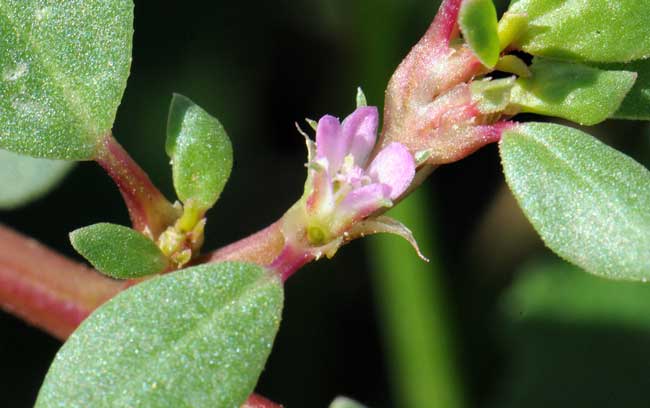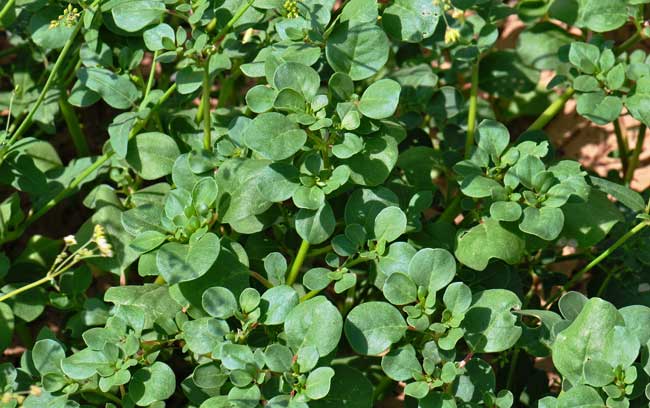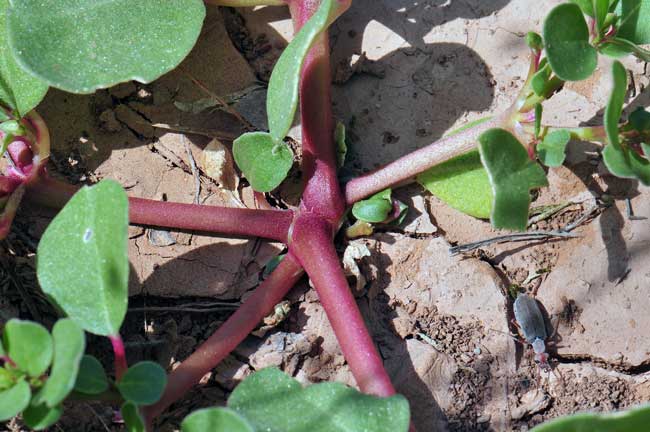Trianthema portulacastrum, Desert Horsepurslane



Scientific Name: Trianthema portulacastrum
Common Name: Desert Horsepurslane
Also Called: Desert Horse-purslane, Horse Purslane, Black Pigweed, Giant Pigweed (Spanish: Verdolaga de Cochi, Verdolago de Cochi, Verdolaga Blanca (Bronca))
Family: Aizoaceae, Ice Plant Family
Synonyms: (Trianthema monogyna, Trianthema procumbens)
Status: Native
Duration: Annual or perennial
Size: 18 inches, usually lower.
Growth Form: Forb/herb; seasonal following rain, low growing; prostrate, forms mats, sometimes with the branch extremities curved upward, semi-succulent, mostly glabrous, lines of fine hairs near the leaves.
Leaves: Green, shiny green or reddish-green; fleshy, opposite, round, oval or obovate, short petioles, leaves paired along stems, unequal in size, with translucent stipules at leaf base.
Flower Color: Purple; tiny with horn-like appendage, lack petals, single flowers, sessile in axils, also with stipules, fruit is a capsule.
Flowering Season: June to October; blooms later (November) in California.
Elevation: 1,000 to 4,000 feet.
Habitat Preferences: Irrigated areas, moist areas, disturbed areas after heavy rainfall.
Recorded Range: Intermittent populations throughout the southern United States and Mexico. It is also native to the West Indies, Central America, South America and Africa. An introduced species in Hawaii and elsewhere.
North America & US County Distribution Map for Trianthema portulacastrum.
U.S. Weed Information: Trianthema portulacastrum is listed in: Weeds of the United States and Canada. Plants included here may become weedy or invasive.
Invasive/Noxious Weed Information: No data available.
Wetland Indicator: Trianthema portulacastrum is on the USDA 2012 National Wetland Plant List as occurring in wetlands and non-wetlands.
Threatened/Endangered Information: No data available.
Comments: Desert Horsepurslane is a common short-lived shiny green or reddish-green succulent looking plant often found in areas of receding pools of water.
Desert Horsepurslane has ethno-botanical uses identified at Native American Ethnobotany, University of Michigan, Dearborn.

